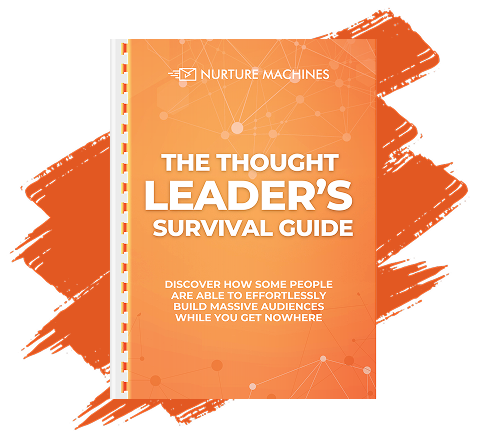Customer feedback is more than just a support tool—it’s a strategic asset in acquisition planning. When businesses listen to what customers truly want, they unlock powerful insights that refine marketing, product design, and overall strategy. From enhancing product-market fit to reducing acquisition costs, feedback shapes a smarter path to growth.
By integrating structured systems to collect and act on these insights, companies create a tighter connection between customer needs and acquisition results. Nurture Machine helps streamline this process through automation and real-time analysis. This ensures your feedback loops lead to measurable and scalable improvements.
Key Takeaways
- Customer feedback reveals friction points and improvement areas across the acquisition funnel.
- Real-time insights help optimize messaging, design, and campaign efficiency.
- Better product-market fit leads to lower CAC and stronger customer retention.
- Feedback-driven messaging increases engagement and conversion rates.
- Nurture Machine tools make it easier to collect, analyze, and act on feedback consistently.
What Role Does Customer Feedback Play in Refining Your Acquisition Strategy?

Customer feedback acts as a core input for refining acquisition efforts. It reveals obstacles, unmet needs, and improvement opportunities across the funnel. Through direct insights, teams can adapt messaging, update UX design, and enhance engagement strategies. This ongoing loop strengthens campaign alignment with audience expectations. Used effectively, feedback becomes a powerful tool for targeted growth.
How Does Customer Feedback Provide Data-Driven Insights for Acquisition?
Feedback collected through surveys, reviews, and interviews helps companies recognize trends and behavioral patterns. Instead of relying solely on assumptions, teams use insights to optimize design, messaging, and onboarding. Refinements to sign-up processes or navigation flows can significantly raise conversion rates. Integrating this feedback with analytics tools provides deeper context for decision-making. Metrics like bounce rates and engagement scores confirm what’s working. Improvements based on feedback reduce wasted spend across channels. Better segmentation also emerges from this analysis. Over time, a data-backed strategy becomes easier to scale.
Why Is Understanding Customer Needs Essential for Targeted Messaging?
When businesses understand what their customers want, they can craft messaging that speaks directly to those needs. Different segments care about different things—some prioritize value, others want simplicity or innovation. Using feedback, companies can align visuals, tone, and offers to what matters most. CTAs become more compelling when based on real preferences. This personalization builds trust, drives faster decisions, and increases conversions. A/B testing helps refine which messages stick. Matching messaging with expectations also strengthens loyalty. Over time, this consistent alignment fuels more effective campaigns.
How Does Feedback Help Reduce Customer Acquisition Costs Effectively?
Customer feedback highlights friction points that increase costs, such as unclear pricing or complex user flows. Streamlining those elements reduces dropout and boosts efficiency. Feedback can also uncover ineffective ad channels or underperforming messaging. With that knowledge, marketers shift budgets to higher-yield strategies. More accurate targeting leads to less ad waste and stronger lead quality. Resources are used where they create the most impact. This reduces cost per acquisition while improving return. Over time, this loop supports a leaner, smarter funnel.
How Can Customer Feedback Improve Your Product-Market Fit?

Customer feedback strengthens product-market fit by identifying where offerings meet or miss customer expectations. Insights from users guide product adjustments that align more closely with real-world needs. This leads to better usability, satisfaction, and market performance. As alignment improves, acquisition becomes easier and more cost-effective. A strong fit supports both retention and long-term growth.
What Feedback Signals Indicate Alignment With Market Needs?
Signals of strong alignment include positive feedback, repeat usage, and high satisfaction ratings. Customers who frequently express appreciation for usability, value, or experience indicate a product that meets expectations. When fewer complaints surface about key features, it shows the offering delivers what’s promised. Engagement metrics such as active usage and renewal rates reinforce this alignment. High scores in sentiment analysis reflect positive perception. A steady stream of user suggestions also signals involvement and loyalty. These trends help validate continued investment in core features. Over time, consistent signals confirm the product’s relevance.
How Does Improved Product-Market Fit Boost Acquisition Success?
When a product aligns well with market needs, customers are more likely to engage, convert, and advocate. This reduces friction throughout the sales process and lowers acquisition costs. Clear value propositions make messaging more compelling and efficient. As satisfaction grows, referrals increase organically, multiplying impact. Marketing becomes more focused since value is proven and demonstrable. Teams can allocate budgets to scaling rather than fixing gaps. Product-market fit also supports brand differentiation. Altogether, this leads to faster growth and more predictable results.
Which Customer Pain Points Should Be Prioritized for Product Improvements?
The most commonly cited issues—especially those affecting onboarding, usability, or satisfaction—should be addressed first. Segmenting feedback by usage patterns or revenue potential helps determine urgency. Problems that cause drop-offs or frustration have the greatest impact and must be resolved quickly. Categorizing issues as critical, moderate, or minor keeps efforts structured. Simple UX improvements often solve high-friction areas efficiently. Larger feature changes may require development cycles but deliver long-term value. Teams should monitor updates for further insights. Prioritization ensures that resources solve the right problems at the right time.
How Does Customer Feedback Enhance Your Marketing and Messaging Strategies?

Customer feedback uncovers exactly what audiences value, allowing businesses to shape clearer, more compelling marketing messages. It highlights pain points, desires, and language customers use, making messaging more relatable. Insights help refine value propositions and improve campaign targeting. As alignment increases, so does engagement. The result is stronger communication that drives better conversions and loyalty.
How to Create Targeted Marketing Messages Based on Customer Insights?
Segmenting audiences by behavior and feedback allows for tailored messaging that resonates with each group. Marketers can identify which features or benefits appeal most to different segments. Campaigns can then be adjusted to emphasize relevant values such as affordability, innovation, or ease of use. Customer language should be used in headlines and calls to action for authenticity. Insights also guide tone, timing, and offer types. A/B testing reveals the best variations for engagement. Clear, personalized messaging creates stronger emotional connections. This approach results in higher click-through and conversion rates.
What Are Examples of Messaging That Resonates With Customer Preferences?
Effective messages reflect real concerns, priorities, and positive experiences shared by customers. Messaging that focuses on outcomes like time saved, improved results, or ease of use often performs well. Highlighting practical benefits in simple terms appeals to wider audiences. User-generated stories and social proof offer credibility and relatability. Campaigns that show real-life application of the product deepen trust. Visuals should align with the emotional tone of the message. Strong CTAs complete the loop by prompting clear action. All elements work together to match what customers care about most.
How Does Feedback-Driven Messaging Increase Customer Engagement?
When marketing reflects actual customer opinions and preferences, engagement naturally improves. People respond more to messaging that mirrors their language and addresses their pain points. Feedback helps pinpoint what motivates clicks, shares, and conversions. It also identifies elements that may be confusing or off-putting. Using these insights, businesses can refine their campaigns to feel more personal and relevant. Consistent engagement builds loyalty and reduces the need for aggressive ad spending. Feedback loops foster two-way communication, deepening trust. This strategy turns insights into measurable performance gains.
How Can You Collect and Leverage Customer Feedback Effectively?

Customer feedback offers a strategic advantage when captured and applied through structured systems. It must be gathered consistently across touchpoints, analyzed using reliable tools, and integrated into workflows. Businesses that prioritize feedback see improvements in acquisition, retention, and customer satisfaction. The most effective strategies rely on both qualitative and quantitative inputs. Successful implementation requires collaboration and responsive action.
What Are the Best Methods for Gathering Actionable Customer Feedback?
Using a mix of methods yields the most valuable results. Surveys with structured questions provide measurable insights at scale. In-depth interviews and focus groups capture nuanced opinions and emotional drivers. Monitoring digital channels like social media uncovers real-time reactions and emerging trends. Post-interaction questionnaires help assess service satisfaction. Website tools like pop-ups and chatbots collect insights during user sessions. Mobile feedback features reach users in context. Combining tools increases visibility into the customer journey. Each method supports a fuller understanding of needs and preferences.
How to Analyze Feedback to Identify Acquisition Opportunities?
Organizing data by categories such as usability, communication, and satisfaction uncovers patterns quickly. Sentiment analysis detects overall customer tone, highlighting pain points and positive drivers. Filtering by audience segments reveals opportunities to tailor acquisition strategies. Keyword clustering shows recurring themes across sources. Dashboards enable side-by-side comparisons and trend tracking over time. Heatmaps and behavioral analytics identify gaps in digital experience. Root cause analysis uncovers the reasons behind drop-offs or low conversions. Together, these tools convert feedback into actionable acquisition insights.
How to Integrate Feedback Into Acquisition Strategy Workflows?
Feedback must be centralized and accessible across departments. CRM systems, project management tools, and collaboration platforms allow insights to flow between marketing, product, and customer support. Agile workflows make it easy to respond to trends quickly. Setting up review cycles ensures feedback is assessed regularly. Teams can prioritize suggestions based on business impact and ease of implementation. Tying feedback to performance metrics reinforces accountability. Creating a culture of responsiveness builds internal alignment. Integration ensures feedback drives continuous strategic refinement.
What Are the Measurable Benefits of Using Customer Feedback in Acquisition?

Customer feedback directly enhances acquisition outcomes when it informs marketing, product design, and user experience. It reduces costs by eliminating friction and boosting conversion rates through strategic improvements. Measurable gains include increased ROI, lower CAC, and improved satisfaction metrics. Businesses can track these benefits using analytics tools and performance dashboards. With consistent implementation, feedback transforms into a long-term growth asset.
How Does Feedback Reduce Customer Acquisition Cost (CAC)?
Feedback uncovers inefficient steps in the acquisition journey that inflate cost. Streamlining complex forms or unclear navigation based on user comments removes barriers. This reduces the need for costly remarketing or extended follow-up efforts. Insights help refine messaging and improve first-contact conversions. Eliminating friction increases flow efficiency and shortens sales cycles. Effective feedback use results in higher lead quality and fewer wasted ad impressions. As acquisition becomes smoother, cost per lead naturally decreases. The outcome is a more cost-efficient funnel and stronger budget performance.
What Improvements in Conversion Rates Result From Feedback-Driven Strategies?
Targeted updates based on real user experiences drive measurable gains. Refining ad copy or page layouts following feedback removes confusion and hesitation. Adjusting messaging or visuals based on preferences builds trust faster. Simpler sign-up processes respond to friction flagged by users, increasing completion. Personalization increases relevance and connection. Consistent review of interaction data ensures updates stay user-centric. Even minor adjustments often lead to significant lifts in conversions. Over time, these improvements compound and optimize performance.
How to Track ROI From Feedback-Enhanced Acquisition Efforts?
Start by identifying KPIs tied to customer experience, such as CAC, CLTV, or conversion rate. Use analytics dashboards to monitor changes after feedback-driven updates. Establish baseline performance before making changes for accurate comparison. Segment data by audience and channel to see where the biggest lifts occur. Attribute growth to specific feedback-driven initiatives through A/B testing. Reporting cycles should align with major campaign phases to evaluate results. Continuous review ensures strategies remain effective. ROI tracking confirms that feedback is fueling real acquisition gains.
Frequently Asked Questions
In what ways does targeted messaging based on customer feedback improve conversion rates?
Feedback-based messaging addresses real concerns, making campaigns more relevant and persuasive. Aligning content with customer language and preferences reduces hesitation, builds trust, and leads to higher conversions with less ad spend.
How can companies measure the ROI of feedback-driven acquisition improvements?
Businesses can track ROI by comparing key metrics like CAC, CLTV, and conversion rates before and after feedback-based changes. Nurture Machine’s analytics tools help visualize these improvements in real time for clear attribution.
What lessons can be learned from competitors’ feedback strategies?
Analyzing competitor reviews and responses reveals common pain points and improvement opportunities. Learning from their wins and mistakes helps businesses refine messaging, improve service, and strengthen differentiation.
How does improved product-market fit influence customer acquisition?
A strong fit boosts conversions, reduces acquisition costs, and increases referrals. When the product clearly meets user needs, less persuasion is needed, and campaigns perform more efficiently across all channels.
Why is continuous feedback integration essential for long-term acquisition success?
Ongoing feedback ensures strategies stay aligned with changing customer expectations. Nurture Machine supports continuous feedback loops that optimize messaging, targeting, and customer experience for sustainable growth.
Conclusion
Incorporating feedback into your acquisition strategy creates a more responsive and effective growth engine. Every customer touchpoint becomes an opportunity to learn and improve. Businesses that listen closely and act quickly stay aligned with market demands.
Nurture Machine supports this process with intelligent tools that make feedback actionable and impactful. By refining acquisition through real customer insights, companies boost efficiency and build stronger relationships. Over time, this approach not only lowers costs but drives long-term success in a competitive landscape.






